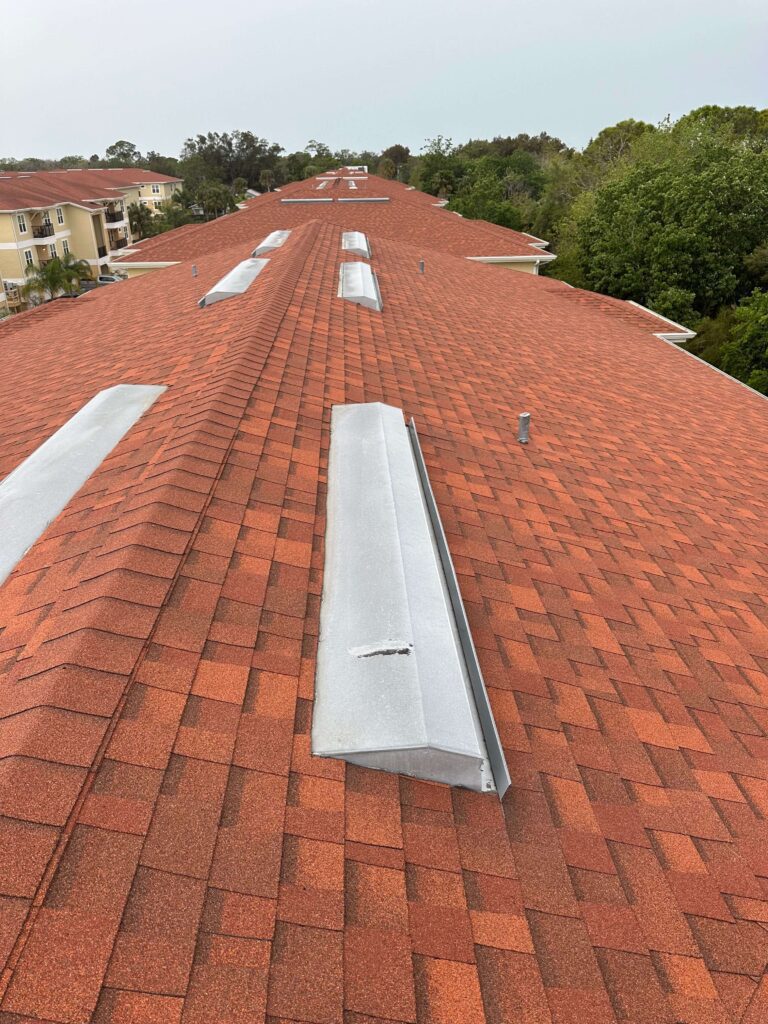We all know that Florida storms can be unpredictable. One moment the skies are calm, and the next, high winds, heavy rain, and flying debris are testing every inch of your roof. In Tampa, where hurricanes, tropical storms, and sudden afternoon downpours are part of life, knowing what to do after roof damage can save you stress, money, and further problems.
Here’s a clear, step-by-step guide to help you handle roof damage safely and effectively, plus insight into when to call in trusted professionals who know our local conditions inside and out.
Step 1: Prioritize Safety First
After a storm, the urge to check your roof immediately is understandable—but safety comes first. It’s best not to climb onto the roof yourself. Storm damage can weaken decking, loosen shingles, and hide hazards like nails or broken tiles.
Instead:
- Walk around your property at ground level.
- Look for visible signs of damage such as missing shingles, bent flashing, or pieces of roofing material on the ground.
- Check for fallen branches or other debris that may have hit the roof.
If you suspect serious damage or see water entering your home, call a roofing professional right away.
Step 2: Document the Damage
If it’s safe to do so, take clear photos or videos of any visible roof damage from the ground or from inside your home. This documentation can be valuable for:
- Filing an insurance claim
- Providing contractors with initial information
- Keeping a personal record of the incident
Be sure to capture:
- Damaged shingles, tiles, or panels
- Impact marks from debris
- Sagging or uneven roof lines
- Interior ceiling stains or leaks
Step 3: Prevent Further Water Intrusion
If water is coming into your home, the priority is to limit the damage. Place buckets or containers under leaks and move furniture or valuables out of the way.
You can also use tarps as a temporary measure—though in most cases, it’s best to have a roofing crew handle this to ensure safety and proper installation. A poorly secured tarp can blow away or even cause more damage in high winds.
Step 4: Contact Your Insurance Company
For significant storm damage, contact your homeowner’s insurance provider as soon as possible. They’ll guide you through the claims process and may send an adjuster to inspect your roof.
It’s helpful to:
- Have your policy number ready
- Provide the photos you took earlier
- Keep a log of all communications related to the claim
Remember, insurance companies often have many claims to process after a major storm, so starting early can help speed things along.
Step 5: Schedule a Professional Roof Inspection
Even if your roof looks okay from the ground, storms can cause hidden issues—like lifted shingles, cracked flashing, or compromised underlayment—that lead to bigger problems later.
A professional inspection ensures:
- All damage is identified, including less obvious issues
- Repairs meet Tampa’s strict building codes
- You have a detailed estimate for insurance or personal budgeting
Step 6: Understand Your Repair or Replacement Options
Depending on the extent of the damage, your roofing contractor will recommend either targeted repairs or a full replacement.
- Repairs may be enough if the damage is localized—such as a few missing shingles or a single impact point from debris.
- Replacement might be necessary if the damage is widespread, the roof is nearing the end of its lifespan, or water intrusion has compromised the decking.
A trustworthy contractor will walk you through the pros and cons of each option so you can make an informed choice.
Step 7: Choose a Local Roofing Expert Who Knows Tampa
Storm recovery isn’t the time to gamble with unproven contractors—especially after major weather events, when out-of-town “storm chasers” often flood the market.
Look for:
- A valid Florida roofing license
- Proof of insurance
- A strong track record of work in the Tampa area
- Knowledge of local building codes and hurricane-resistant materials
Step 8: Schedule Repairs Quickly—but Wisely
Once you’ve chosen a contractor and finalized the scope of work, schedule your repairs as soon as possible to prevent further damage. But don’t rush into a contract without reviewing the details carefully. Make sure the proposal includes:
- Materials to be used
- Estimated start and finish dates
- Total cost and payment terms
- Warranty information
Step 9: Plan for the Future
Storm damage is a reminder of how important a healthy roof is for your home. After repairs are complete, consider preventive steps like:
- Annual professional inspections
- Clearing gutters before rainy season
- Trimming overhanging tree branches
- Upgrading to wind- and impact-resistant materials
Why Tampa Homeowners Trust Fix Roofing After the Storm
When your roof is damaged, you don’t just need repairs—you need guidance, reassurance, and a crew that understands Tampa’s unique weather challenges.
Our crew has decades of experience helping homeowners recover after storms. We know the signs of both visible and hidden damage, work quickly to protect your home from further harm, and ensure all work meets or exceeds Florida’s strict building codes.
We’ve earned the trust of our neighbors by combining skill, integrity, and genuine care for the people we serve.
Ready to Get Your Roof Back in Shape?
If your roof has been hit by a storm, don’t wait for small issues to turn into bigger problems. We offer thorough inspections, clear estimates, and expert repairs tailored to Tampa homes.

